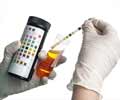Treatment for Diabetic Kidney Disease
The goal of DKD treatment is to slow down the progression of kidney damage and prevent kidney failure. This involves a combination of lifestyle changes and medications.
Lifetsyle changes -
- Quit Smoking - Avoid smoking or using tobacco products.
- A healthy balanced diet - The changes include a low-protein, low-fat, low-salt diet and regular exercising.
- Limiting sodium intake in diet can help reduce blood pressure
- Weight management - Overweight/obesity increases the risk of diabetic kidney damage.
- Blood sugar/Blood pressure control
Medications
A) Controlling blood pressure helps to protect kidneys. BP must be maintained at:
- Systolic blood pressure -120–130 mm Hg
- Diastolic blood pressure-70–80 mm Hg
B) Medications such as Angiotensin-converting enzyme (ACE) inhibitors are administered to patients as these are more effective than other blood pressure medications in protecting kidney function. Patients who are not tolerant of ACE can be given Angiotensin II receptor blockers (ARBs).
Both these medications can cause hyperkalemia as a side effect, a condition in which there are higher than normal levels of potassium in the blood.
Other medications now showed to slow the progression of diabetic kidney disease are sodium glucose cotransporter 2 (SGLT2) inhibitors and glucagon-like peptide agonist (GLP1 agonist).
Please speak to your doctor about these medications.
C) Controlling cholesterol through medications is also mandatory. Statins can help lower cholesterol levels, which can also benefit kidney health.
D) Renal Replacement Therapy (RRT) - Once the patients progress to end-stage renal disease, RRT may be carried out in the following ways:
- Hemodialysis in which the toxic products are removed from blood through filtration
- Peritoneal dialysis which involves filtration of wastes through the lining membrane of the abdominal cavity
- Kidney transplant in those with complete kidney failure





